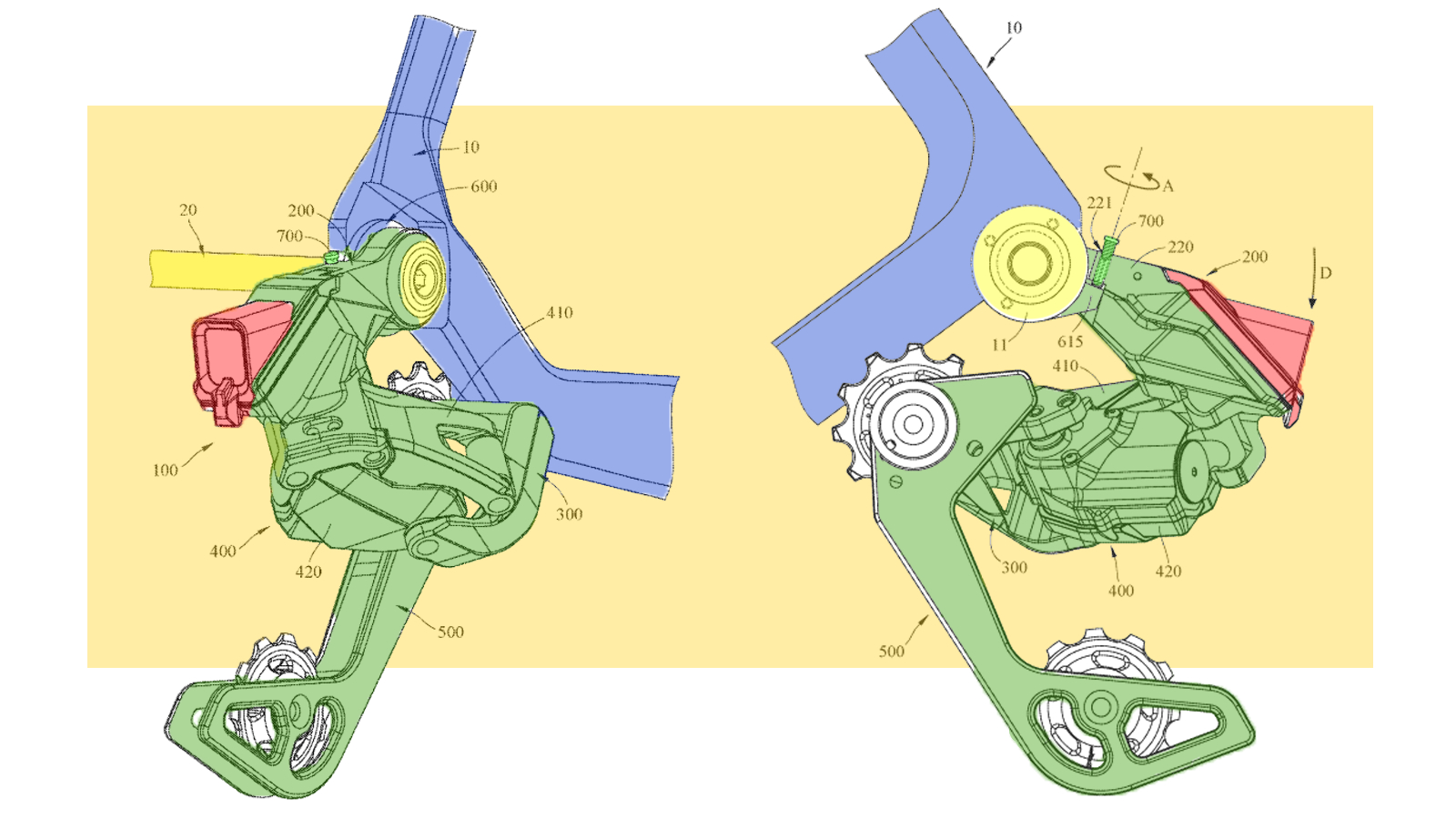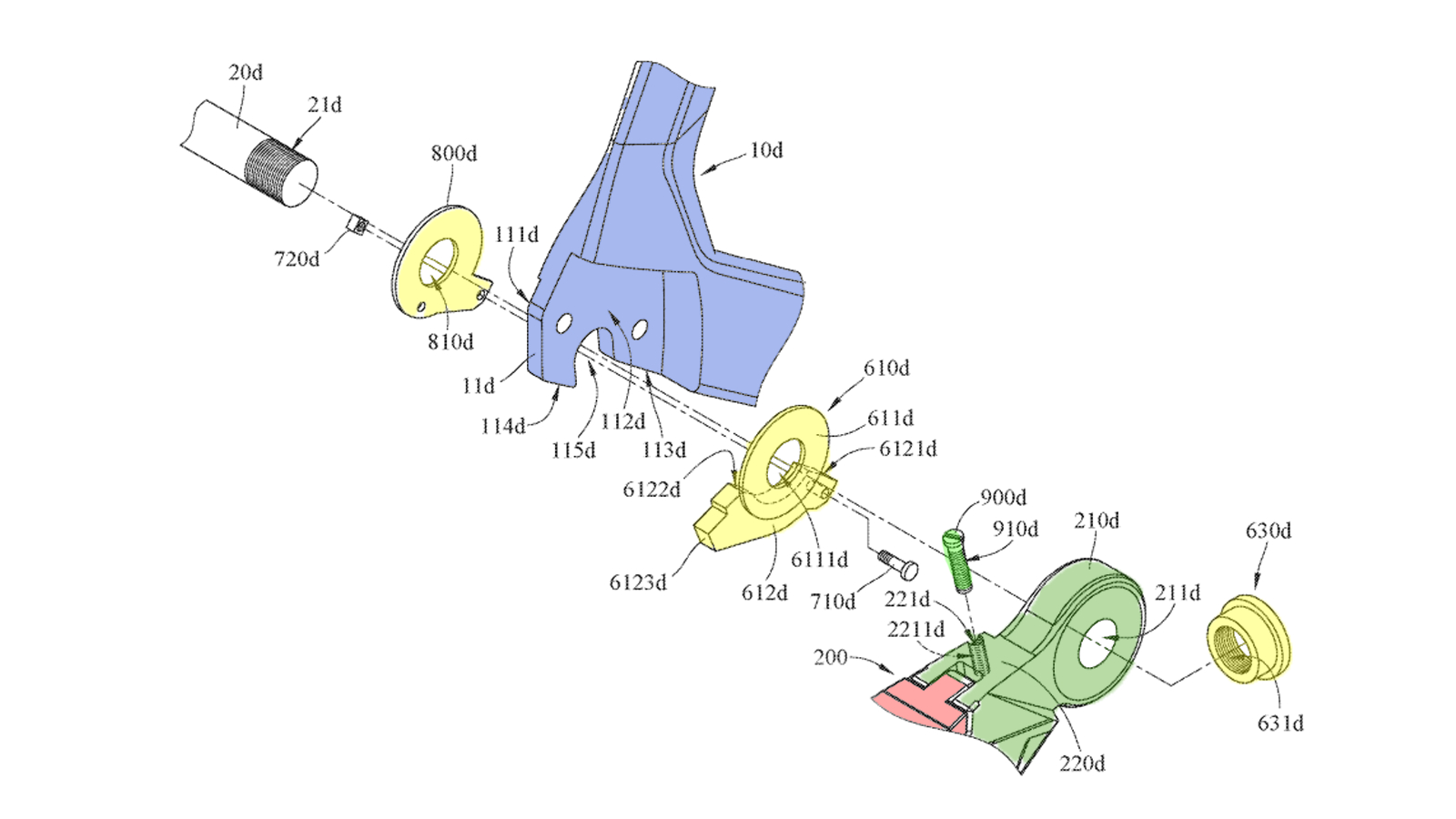
Not to be left behind, it appears that TRP is also developing their own version of a hangerless coaxially mounted derailleur.
There has been a lot of movement in the last week or so as SRAM has seemingly sent shockwaves amongst the best MTB drivetrain manufacturers with the release of their new hangerless T-Type Transmission. We recently reported on Shimano's reaction, as they filed some very interesting patents which also included a hangerless design as well as hinting at the return of Di2 to their MTB drivetrains. Only a few days later, patents have been surfaced by Bike Rumour which appears to show that TRP is also working on their own system.
For TRP, the significant course change in the drivetrain world has come at an unfortunate time. Just a day after SRAM's transmission announcement, TRP announced an update to their EVO groupset.

Well hung
What's interesting about the TRP patent is their frame fitment is different from SRAM's design and Shimano's patent drawings. TRP has opted for a single arm that attaches the derailleur to the axle, rather than sandwiching the dropout of the frame with two arms. This could potentially give TRP all the ease of setup and durability benefits that are being touted by this new derailleur fitment and allow the derailer to be removed without having to also remove the axle and rear wheel.
TRP purpose a number of ways to do this, although all three options use a variation of a stepped axle receiver that screws or slots in with splines to the B-Screw knuckle which is then attached to the frame, the derailleur itself is slid onto the receiver before being secured with a threaded cap.

There is a purposed fourth option too, which is similar to the two-arm fitment of SRAM and Shimano and sandwiches the frame between two plates. What's most interesting about this fourth option is that it shows a quick-release dropout which could indicate TRP are investigating ways to make coaxial derailleur mounts compatible with non-UDH frames.
As with the Shimano patent design, it's hard to tell whether TRP's interpretation will be SRAM UDH (Universal Derailleur Hanger) compatible. We don't see why they couldn't be, so unless SRAM's legal team has something to say about it, so let's hope for the sake of compatibility sanity that all these systems will use a cross-compatible dropout fitment.

The B-Teams
Another important differentiation between SRAM and Shimano and TRP's design is that the two latter manufacturers appear to be continuing the B-Screw adjuster (shown in bright green).
SRAM's most recent derailleurs went adjustment-free and have now screw adjustments or limiters on the derailleur itself, presumably as SRAM only intends the derailleur to be used with their own Eagle cassettes.
TRP and Shimano's patents both show the presence of a B-screw which allows the derailleur to be adjusted based on the number of teeth on the rear cassette which should add more compatibility.

Will TRP go electric?
While the images in the patent appear to show what could be a battery or battery mounting point (shown in red), as well as no gear cable fasteners, there isn't any mention of batteries or motors in the patent. Considering the speed that they have moved in reaction to SRAM, TRP are obviously wanting to cement themselves as one of the big MTB drivetrain players. Whether you like it or not, electronic shifting is only going to become more common in MTB so there is a good chance that electronic shifting will be on the cards in the future.
For now, we will just need to keep an eye out for further patents or leaks that could confirm this.
When will we see this tech on our bikes?
This is very hard to say especially considering TRP has only just released the latest version of its Evo 12 and Evo 7 drivetrain, so there is a good chance it may be some time before TRP ditches the hanger.
Unlike Shimano, there isn't as much pressure for TRP to keep up with SRAM either. There are still plenty of new bikes, as well as older bikes that aren't yet compatible with the SRAM UDH standard and are looking for drivetrains.




!["[T]he First and Fifth Amendments Require ICE to Provide Information About the Whereabouts of a Detained Person"](https://images.inkl.com/s3/publisher/cover/212/reason-cover.png?w=600)


